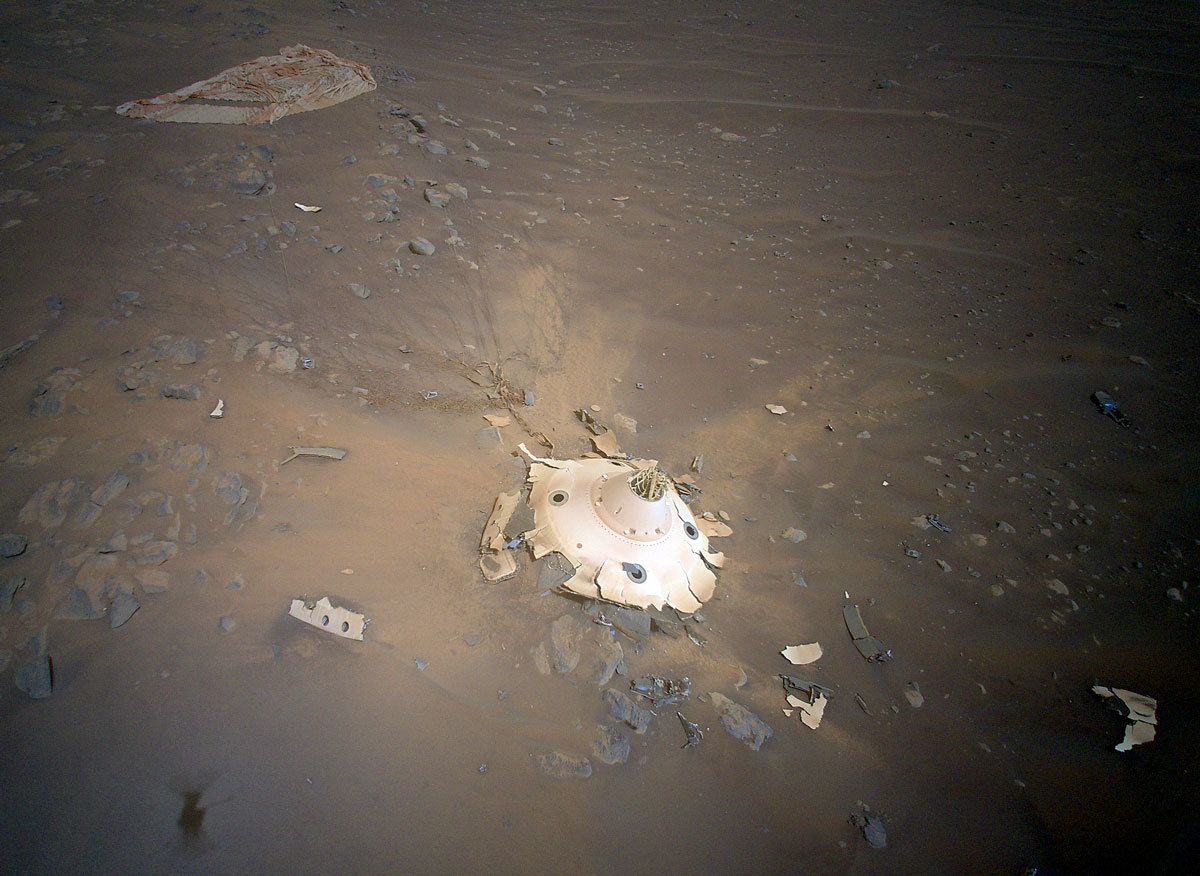The Perseverance
robotic vehicle
continues its Martian mission, exploring Jezero Crater, collecting samples and taking pictures of both the Red Planet's landscape and its own components.
NASA's rover cameras are the eyes that allow scientists on Earth to see what is happening on Mars, millions of miles away.
The problem is that when they catch an intriguing aspect, they need days and a slow investigation to try to clarify its nature.
It just happened with an image captured on August 4 by the SHERLOC WATSON camera that the robot has built into its robotic arm.
The photo shows a kind of filament, thread, or 'hair', as described on the
Perseverance
mission blog by Art Thompson, project manager at NASA's Jet Propulsion Laboratory (JPL).
To know more
Exploration.
Perseverance obtains oxygen for the first time on Mars and records the flight of the Ingenuity helicopter
Writing: TERESA GUERREROMadrid
Perseverance obtains oxygen for the first time on Mars and records the flight of the Ingenuity helicopter
The filament was in the robot's chuck
, and was discovered during the analysis of sample number 12 that the robot collects.
The procedure each time
Perseverance
takes samples on the red planet includes photographing the components of the collection system for those materials.
In these images, two small fragments of debris were seen whose nature and origin have not yet been identified: a small object in a drill bit and the aforementioned filament in the chuck, according to the NASA researcher.
The team is investigating its possible origin,
so at the moment, everything is conjecture.
According to Art Thompson, they will analyze whether this mysterious debris originated from the
rover
itself or perhaps from external debris that was scattered on Mars after the robotic vehicle landed in February 2021.
Aerial view of space debris generated during the landing of 'Perseverance' captured by the 'Ingenuity' helicopter NASA/JPL-Caltech
They would then form part of the ship's entry, descent and landing (EDL) system, which releases components at high speed during landing.
Once it enters the Martian atmosphere, it removes parts such as the heat shield, which protects it from the infernal temperatures of this phase of the mission, and deploys a large parachute to slow down when it is close to the Martian surface.
The pieces are scattered over an area of several kilometers.
As detailed by Art Thompson, to try to find out the origin of the filament, commands have been sent to the robot to take additional photographs.
Perseverance
's Hazcam and Navcam cameras can image
the surface in front of you, so this way they will check for traces of other visible foreign objects.
On the other hand, the robotic arm is taking other images of the pieces in which those objects have been seen from other angles to see them in more detail.
This weekend they could already have some results, although the team is considering doing additional analyzes to better understand the nature of the debris.
POT
A few weeks ago,
Perseverance
came across what looked like a kind of coiled rope on the Martian surface, but the investigation has concluded that it is not material of extraterrestrial or biological origin.
Mission researchers believe this
six-centimeter-long
tangle is a piece of the Dracon web of the rover's entry, descent, and landing system.
It is a type of synthetic fiber that is used in the manufacture of fabric for sails, and possibly belonged to one of the thermal protection blankets carried by the spacecraft.
All objects found in the vicinity are recorded and analyzed, as there is a risk that they could contaminate the samples of Martian material that the vehicle collects, some of which will be brought to Earth in the future in a future robotic mission. .
Although it is inevitable to generate garbage in space missions, since to make flights possible there are components that must be discarded, the truth is that the accumulation of Martian missions is causing metal or textile waste to be scattered on its surface in some areas.
Conforms to The Trust Project criteria
Know more
Articles Teresa Guerrero

